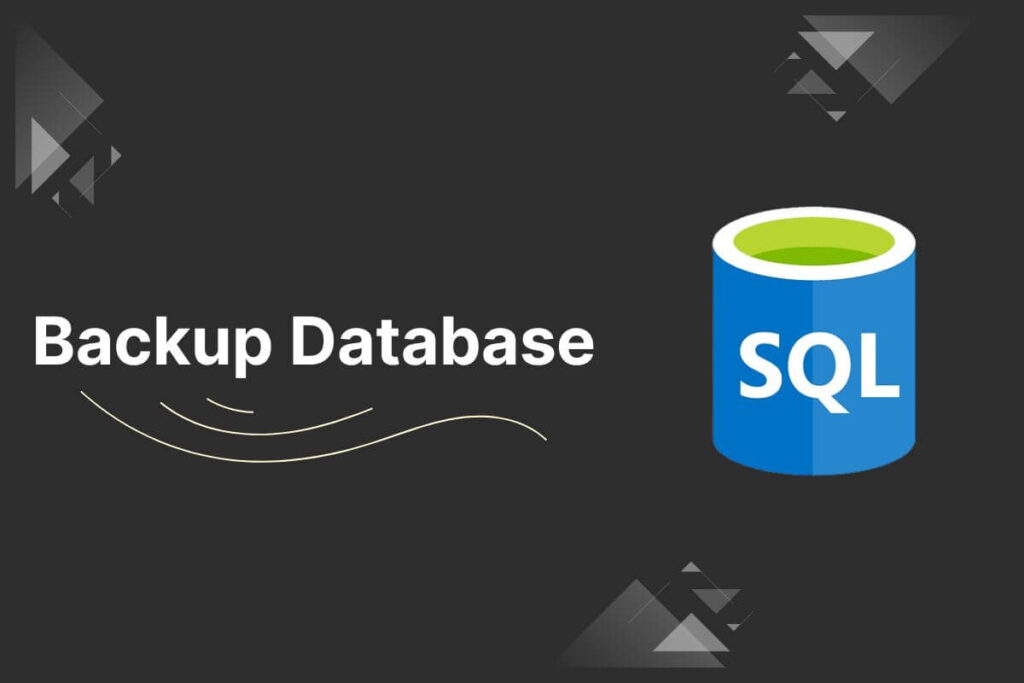One of the most crucial aspects of database management is performing regular backups, which create copies of the data that can be restored in case of data loss, corruption, or system failure.
Among the various database management systems, SQL databases stand out for their widespread use in storing and managing critical data for organizations across the globe. As such, understanding the significance of SQL database backups and implementing best practices is paramount for any organization relying on such systems.
SQL Backup Database Statement
The syntax for backing up a database in SQL Server can vary slightly depending on the specific requirements and options chosen.
However, the basic syntax for the BACKUP DATABASE statement in SQL Server is as follows:
BACKUP DATABASE database_name
TO {
{ DISK | TAPE } = 'backup_device'
| URL = 'Azure_URL'
[ ,...n ]
} [ WITH with_options [ ,...o] ]
[;]
Types of SQL Database Backups
SQL database management systems (DBMS) typically offer several types of backups to cater to different recovery scenarios and performance requirements:
1. Full Backup
A full backup captures the entire database, including data, schema, and metadata, creating a complete copy of your database at a specific point in time. While full backups are the most comprehensive, they can be time-consuming and resource-intensive, especially for large databases.
Example (Microsoft SQL Server):
BACKUP DATABASE MyDatabase
TO DISK = 'C:\Backups\MyDatabase_Full.bak'
WITH INIT;
2. Differential Backup
A differential backup captures only the data that has changed since the last full backup. It is typically faster than a full backup but requires the presence of a previous full backup to restore the database completely.
Example (MySQL):
BACKUP DATABASE MyDatabase
TO DISK = 'C:\Backups\MyDatabase_Differential.bak'
WITH DIFFERENTIAL;
3. Transaction Log Backup
This type of backup captures the transaction log, which records all changes made to the database since the last log backup. Transaction log backups are typically smaller and faster than full or differential backups and are often used in conjunction with them to enable point-in-time recovery.
Example (PostgreSQL):
SELECT pg_stop_backup('C:\Backups\MyDatabase_TransactionLog.bak');
Implementing a Backup Strategy
To ensure the reliability and effectiveness of your SQL database backups, it’s essential to follow best practices and implement a comprehensive backup strategy:
1. Backup Schedule: Determine an appropriate backup frequency based on the criticality of your data and the frequency of changes. A common approach is to perform daily full backups, with differential or transaction log backups occurring more frequently (e.g., every few hours).
2. Backup Testing: Regularly test the restoration process to ensure that your backups are valid and can be successfully restored when needed. This can be accomplished by restoring backups to a test environment and verifying data integrity.
3. Backup Storage: Store backups in a secure location, preferably off-site or in the cloud, to protect them from potential disasters that could affect your primary data center.
4. Backup Automation: Leverage database management tools or scripts to automate backup processes, minimizing the risk of human error and ensuring consistent execution.
5. Monitoring and Alerting: Implement monitoring and alerting mechanisms to receive notifications in case of backup failures or issues, allowing for prompt resolution.
6. Retention Policies: Define and implement retention policies for backups, specifying how long backups should be kept based on your organization’s requirements and industry regulations.
Example Backup Strategy (Microsoft SQL Server):
-- Full Backup (daily at 2 AM)
EXEC msdb.dbo.sp_start_job @job_name = 'Full Backup'
-- Differential Backup (every 4 hours)
EXEC msdb.dbo.sp_add_schedule
@schedule_name = 'Differential Backup Schedule',
@freq_type = 4,
@freq_interval = 4;
EXEC msdb.dbo.sp_attach_schedule
@job_name = 'Differential Backup',
@schedule_name = 'Differential Backup Schedule';
Restore SQL Database
Restoring SQL backups is as crucial as creating them, as it ensures that your data can be recovered in the event of data loss or corruption.
Here’s an example of how to restore a SQL Server database backup using the RESTORE DATABASE statement:
USE master;
GO
-- Restore full database backup
RESTORE DATABASE AdventureWorks
FROM DISK = 'C:\Backup\AdventureWorks.bak'
WITH REPLACE, RECOVERY;
GO
If you have a chain of backups, such as full, differential, and transaction log backups, you would typically restore them in sequence to ensure that the database is recovered to the most recent point in time.
Here’s an example:
-- Restore full database backup
RESTORE DATABASE AdventureWorks
FROM DISK = 'C:\Backup\AdventureWorks_Full.bak'
WITH REPLACE, NORECOVERY;
-- Restore differential backup
RESTORE DATABASE AdventureWorks
FROM DISK = 'C:\Backup\AdventureWorks_Diff.bak'
WITH NORECOVERY;
-- Restore transaction log backup(s)
RESTORE LOG AdventureWorks
FROM DISK = 'C:\Backup\AdventureWorks_Log1.trn'
WITH NORECOVERY;
-- Optionally, repeat the above statement for additional log backups.
-- Finally, recover the database
RESTORE DATABASE AdventureWorks
WITH RECOVERY;
SQL database backups are a cornerstone of data management and protection strategies for organizations of all sizes. By adhering to best practices such as establishing regular backup schedules, utilizing a combination of full and differential backups, and ensuring offsite storage and encryption, businesses can mitigate the risks associated with data loss and maintain operational continuity.
Remember, the true value of backups is not in creating them, but in being able to successfully restore data when the need arises. Therefore, investing time and resources in robust backup solutions is an investment in the resilience and longevity of your organization’s data infrastructure.


